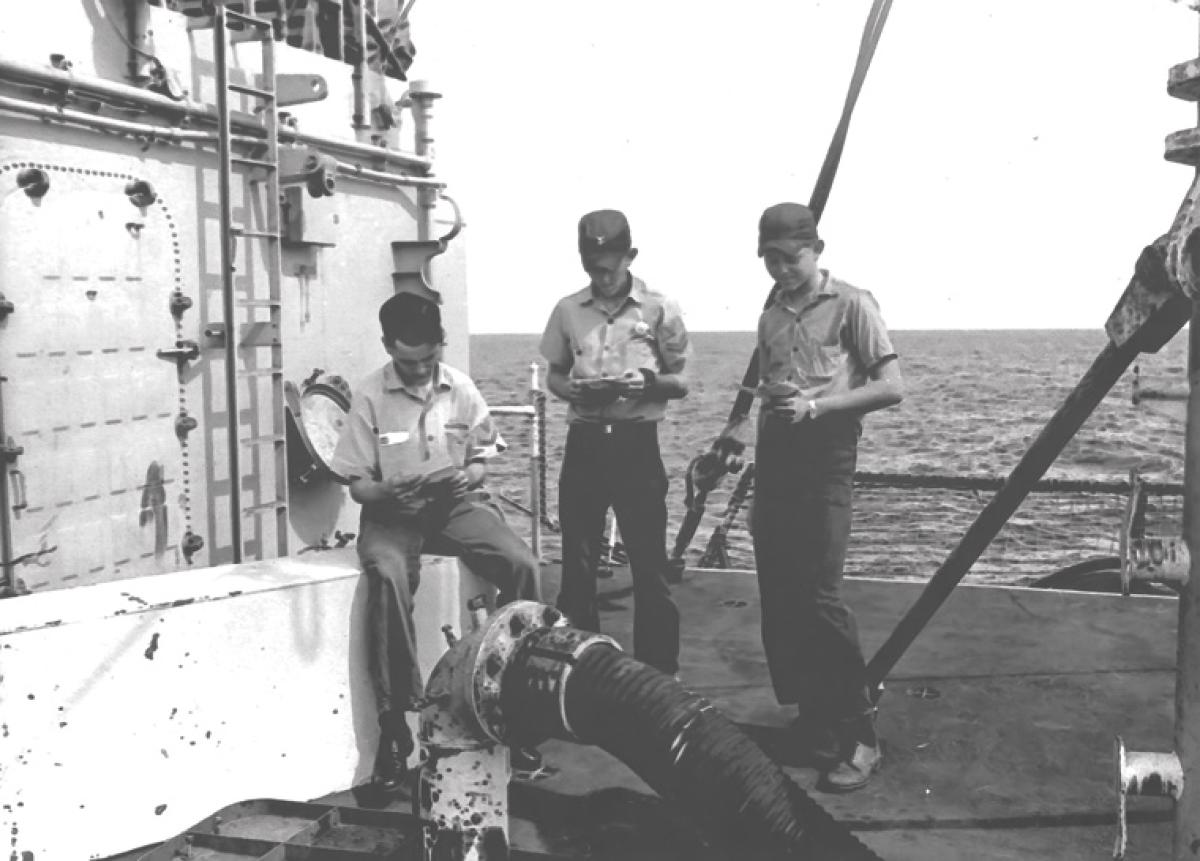Eunice Sage was proud of her three sons, all serving in the Navy. She was happy that they were together but concerned that their serving in the same ship could have consequences she refused to think about.
The three Sage brothers were serving in the USS Frank E. Evans (DD-754), a destroyer that by all accounts was doing an exemplary job of providing naval-gunfire-support missions to Marines ashore in Vietnam. Despite that, in late May 1969, the ship was pulled off the gun line and ordered to proceed to Subic Bay, the Philippines, for replenishment and to take part in planning conferences for a multinational naval exercise. Dubbed Operation Sea Spirit, it involved 50 ships from various nations and was to take place in the South China Sea about 100 miles outside the designated Vietnam combat zone. By early June, the Evans was doing her part with the allied Task Group 472.1, which included several American, British, and New Zealand destroyers screening an Australian aircraft carrier, HMAS Melbourne.
Toward the end of the mid watch on 3 June, the Evans received orders to proceed to a station astern of the carrier to assume plane-guard duties. Through a series of complicated mistakes and misjudgments (a tragic but edifying sequence that every aspiring officer of the deck should study), the two young officers standing the officer of the deck and junior officer of the deck watches wound up crossing the bow of the carrier without ever having notified their captain that his ship was standing into danger. A later study indicated that of the nine possible rudder-order combinations that could have been taken by the two ships, seven would have resulted in a harrowing but harmless near miss, and one would likely have ended with only minor damage. The chosen ninth resulted in the carrier striking the destroyer amidships at a 90-degree angle.
The Evans was severed between her stacks, with the forward portion plunging to the bottom within minutes, and the mangled after section barely managing to remain afloat. Amidst this tragedy there were countering moments when duty trumped chaos, when selfless heroism cheated the final toll.
Seaman Robert Petty, the boatswain’s mate of the watch at the time of the collision, had been thrown into the sea. Despite several injuries, including a bleeding head wound, he climbed back aboard the sinking forward half of the ship and managed to un-dog and open a weather door, allowing 16 men to escape before the wreck plunged to the bottom.
In a berthing compartment in the doomed forward half of the ship, the heartening voice of Boatswain’s Mate Second Class Gary Sage reassured some of the men trying frantically to escape as he said, “Stay calm, and we’ll get out of here.” One of the escaping sailors noted that Sage had remained behind, searching for his younger brother who was berthed in that same compartment.
In all, 74 men died that terrible night, their final resting place in 1,100 fathoms of water. Back in Niobrara, Nebraska, Eunice Sage stood in front of her screen door as a uniformed officer approached, three sheets of paper in his hand. . . .
Note: Derived from the Judge Advocate General Investigation, a Navy Training Film (“I Relieve You, Sir”—available on YouTube), and Louise Esola’s American Boys: the True Story of the Lost 74 of the Vietnam War (Temecula, CA: Pennway Books, 2014).
Lieutenant Commander Cutler is the author of several Naval Institute Press books, including A Sailor’s History of the U.S. Navy and The Battle of Leyte Gulf.




